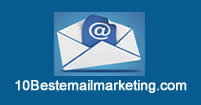Introduction
Email marketing is a powerful tool that allows businesses to reach out to their target audience directly and build lasting relationships. If you're wondering how to start an email marketing campaign, you've come to the right place. In this article, we'll walk you through the necessary steps to launch a successful email marketing campaign and help you maximize its potential.
Why Email Marketing?
Before diving into the specifics of starting an email marketing campaign, let's explore why email marketing is such a valuable tool for businesses. Contrary to popular belief, email marketing is far from dead. In fact, it remains one of the most effective and cost-efficient ways to connect with your audience and drive conversions. Here's why:
- Reach: With over half of the world's population using email, it provides a massive potential reach for your messages.
- Targeting: Email marketing allows you to segment your audience and send tailored messages to different groups, ensuring that your content is relevant and engaging.
- Automation: By utilizing automation tools, you can streamline your email marketing efforts, saving time and resources while delivering personalized messages to your subscribers.
- Analytics: Email marketing platforms provide robust analytics that give you valuable insights into your campaign's performance, allowing you to refine your strategy for better results.
Now that we understand the benefits, let's delve into the steps to start an email marketing campaign.
Step 1: Define Your Objectives
Before sending out your first email, it's crucial to establish clear objectives for your campaign. What do you hope to achieve? Whether it's generating leads, increasing sales, or fostering customer loyalty, defining your goals will help shape your strategy and guide your decision-making throughout the campaign.
Step 2: Build Your Email List
Your email list is the cornerstone of your campaign, so it's essential to build it with care. Start by capturing email addresses from your website visitors through sign-up forms or lead magnets. Offer something of value in exchange for their email address, such as an exclusive discount or a free eBook.
Additionally, leverage your existing customer base by asking for their permission to receive promotional emails from your business. Remember to make the opt-in process seamless and transparent to comply with data protection regulations.
Step 3: Choose the Right Email Marketing Service Provider
To effectively manage and automate your email marketing campaign, you'll need a reliable email marketing service provider (ESP). There are several options available, each with its own set of features and price points. Consider factors such as ease of use, automation capabilities, and integration options when selecting an ESP that aligns with your needs.
Step 4: Create Compelling and Engaging Content
Now that you have your objectives, email list, and ESP in place, it's time to craft captivating content that resonates with your audience. Each email should serve a specific purpose, whether it's announcing a new product, providing valuable tips, or offering exclusive promotions.
Focus on creating personalized and visually appealing emails. Use catchy subject lines to grab attention, craft compelling copy that speaks directly to your subscribers' pain points, and incorporate eye-catching visuals to enhance engagement.
Step 5: Test and Measure Your Campaign
To optimize your email marketing campaign, it's essential to conduct regular tests and track its performance. Split testing allows you to experiment with different elements, such as subject lines, call-to-action buttons, or email layouts, to determine what resonates best with your audience.
Monitor key metrics like open rates, click-through rates, and conversion rates to gauge the effectiveness of your campaign. Use this data to make data-driven decisions and continuously refine your strategy for better results.
Step 6: Stay Compliant with Regulations
When sending promotional emails, it's important to comply with relevant regulations, such as the General Data Protection Regulation (GDPR) for European subscribers. Familiarize yourself with the requirements and ensure you have explicit consent from your subscribers to send them marketing communications.
Step 7: Continuously Improve and Adapt
Finally, successful email marketing campaigns require continuous improvement and adaptation. Keep an eye on industry trends, stay updated with the latest email marketing best practices, and regularly analyze your data to identify areas for improvement. By staying proactive and flexible, you can ensure that your email marketing campaigns remain effective and impactful.
In conclusion, starting an email marketing campaign involves careful planning, strategic execution, and continuous improvement. By following these steps and leveraging the power of email marketing, you can connect with your audience, drive conversions, and ultimately achieve your business objectives.
Remember, email marketing is an ever-evolving landscape, so don't be afraid to experiment, learn from your failures, and adapt your strategy accordingly. With the right approach and a solid understanding of your audience, you can create email campaigns that leave a lasting impression and deliver remarkable results.
